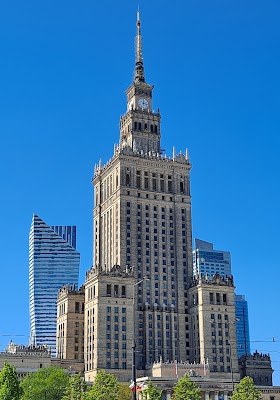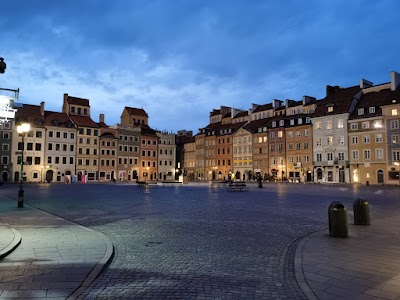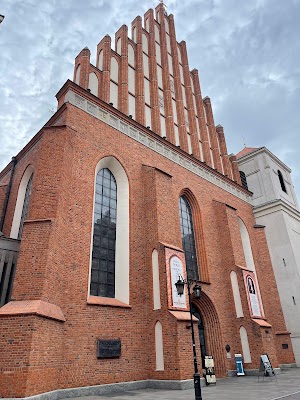Palace of Culture and Science (Pałac Kultury i Nauki)
Overview
The Palace of Culture and Science, towering majestically in the center of Warsaw, Poland, is far more than just an iconic landmark. Often referred to as "PKiN" after its Polish initials, this monumental structure captivates visitors with its impressive stature and rich history, making it a must-see for anyone exploring the city.
The story of the Palace began in the early 1950s as a controversial "gift" from the Soviet Union to the Polish people. Designed by Soviet architect Lev Rudnev and constructed between 1952 and 1955, it was meant to symbolize the strength of Soviet-Polish friendship. However, the building also reflects the complexities of Poland’s post-war era under communist influence, serving as a site of both admiration and contention.
Reaching a height of 237 meters (about 778 feet), the Palace held the title of the tallest building in Poland until 2022. Its architectural style is a striking example of Socialist Realism, interwoven with elements of Polish historicism. This fusion creates an eclectic design characterized by spires, columns, and intricate detailing that echoes the grandeur of Moscow's Seven Sisters.
The Palace of Culture and Science is a vibrant hub, housing a diverse array of facilities that cater to various interests. Within its walls, you’ll find theaters, cinemas, museums, and offices, making it a cornerstone of cultural and business life in Warsaw. One of its star attractions is the observation terrace on the 30th floor, offering breathtaking panoramic views of the city's skyline—a favorite among photography enthusiasts and tourists alike.
Another highlight of the Palace is the Congress Hall, renowned for hosting significant events ranging from concerts by international superstars like the Rolling Stones to important political assemblies and cultural exhibitions. Major events such as the Warsaw International Film Festival and the Warsaw Book Fair bring energy and vibrancy to the Palace’s cultural landscape throughout the year.
Despite its cultural significance, the Palace's origins are steeped in controversy. For many Poles, it stands as a reminder of the Soviet presence and the communist era. Yet, over time, it has been embraced as a symbol of Warsaw's resilience and adaptability. Ongoing efforts to preserve and repurpose the building reflect an evolving attitude towards Poland's complex history.
Beyond its architectural and cultural importance, the Palace is rich in intriguing facts. For example, it was originally named the Joseph Stalin Palace of Culture and Science before the name was quietly changed in the 1950s following Stalin's death and the subsequent destalinization efforts. Interestingly, the building’s clock, one of the largest clocks in Europe, was added only in 2000, decades after its initial completion.
The Palace's influence extends into popular culture, having appeared in numerous films, television shows, and literature, often symbolizing Warsaw itself. It even featured in the music video for David Bowie's song “Warszawa,” further solidifying its place in pop culture history.
Located at the intersection of Marszałkowska and Jerozolimskie streets, the Palace is easily accessible from various parts of Warsaw. It is surrounded by the city’s lively atmosphere, complete with a plethora of cafés, restaurants, shopping centers, and public squares. The area is constantly evolving, with new developments emerging around this historical landmark, showcasing Warsaw's ongoing transformation.
Visiting the Palace of Culture and Science is a journey through time, offering a vivid portrayal of Poland's resilient spirit. Whether you’re enjoying the views from the observation terrace, attending a performance in the Congress Hall, or simply admiring the architectural splendor from the street, the Palace promises a unique and enriching experience.
For any foreign tourist in Warsaw, the Palace of Culture and Science is not just a destination; it encapsulates the essence of Warsaw’s past, present, and future. Be sure to include it in your travel itinerary to fully appreciate the diverse and dynamic history that shapes this beautiful city.






